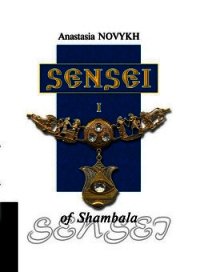Abarat: The First Book of Hours - Barker Clive (читать книги полностью без сокращений бесплатно .TXT) 📗
“Perhaps the heaviness of my heart is increased because of the sight that lies ahead: the Island of Lengthening Shadows, Scoriae. You will forgive me if I don’t linger over the details of that ashen place overmuch. Scoriae depresses the soul.
“Scoriae is not, of course, the only island of the Abarat that can so readily overshadow a man’s natural capacity for joy. So, as I’ve said elsewhere, does Midnight. So too, for different reasons (which I’ll come to later) does The Isle of the Black Egg, which stands at Four in the Morning; and even Speckle Frew, which stands at Five. But there is much about Scoriae which invites a particular mournfulness. It is bleak, of course: a sprawling mass of laval rock and black dust, with the open wound of the volcano. Mount Galigali, at its center. Galigali’s spewings and raging have, over the ages, claimed three magnificent cities: Gosh, Divinium and Mycassius. To wander in the ruins of any of the the three is a melancholy business. All were noble cities, filled with fine and loving souls. Not one of these souls, to my knowledge, survived Galigali’s tantrums. Only the signs of their lives remain to us, clotted in volcanic ash: their temples, their racetracks, their nurseries.
“I remarked earlier that I have never met a dead fellow whose company I did not enjoy. I should except some of the ghosts of Gosh, who were_on one occasion some years back_rude enough to drive me out of their city with their howlings and their batterings. But I should add this: that I had just reached the safety of my boat when Galigali gave a growl and belched a rain of liquid rock, which fell where I had been exploring mere minutes before. The ghosts, in short, had meant me no harm with their assault. They simply didn’t want to add my name to the toll of Galigali’s victims.
“Now we must make a journey from one side of the Abarat to the other, moving in a south-southwesterly direction. The journey, of course, still takes an hour, for we are going to Eight O’clock in the Evening, to the Yebba Dim Day.
“The island of Yebba_The Great Head, as it is colloquially called is carved in the likeness of its sometime owner, Gorki Doodat, and is a warren of tunnels and tiny, ramshackle habitations. Perched on Doodat’s stone cranium (an addition only made after the potentate’s passing) are hall a dozen towers occupied by those personages rich enough for such lofty apartments. Reportedly some of these towers contain inhabitants of immense age: the ancients of the Aeph Nation, who were the first architects of the islands. I cannot confirm or deny these rumors.
“Over the years the Yebba Dim Day has become the informal capital of the Inner Islands, and much bureaucratic work is done in the labyrinths of Gorki Doodat’s head. Here an Abaratic may obtain birth papers, death papers, sea charts, maps and the like. The price list is on the wall close to the entrance to The Great Head. In main cases the price of maps and charts has remained at a zem or two in all the years that I’ve been exploring the islands. My own modest printing press is here at Eight O’clock, a small office at the base of the towers.
“The Yebba Dim Day marks the last hurrah of daylight. By the time we reach Huffaker, which stands at Nine O’clock in the Evening, every last trace of sunlight has departed from the skies.
Huffaker is an impressive island, topographically speaking. Its rock formations_especially those below ground—are both vast and elaborately beautiful, resembling natural cathedrals and temples. The greatest of these is Hap’s Vault, discovered by one Lydia Hap. Even if it were, simply a cavern it would be notable enough for the uncanny precision of its symmetries. But it is not. It is Miss Hap who was the first to suggest the Chamber of Skein.
“The Skein? How do I begin to describe the Skein?
“The word, of course, has humble origins. It means a length of yarn or thread that has been wound on a reel. But the Abaratic Skein, as Lydia Hap describes it, is something far more significant. It is the thread that joins all things_living and dead, sentient and unthinking to all other things. According to the persuasive Miss Hap, the thread originates in the Vault at Huffaker, appearing momentarily as a kind of flickering light before winding its way invisibly through the Abarat, to begin the task of connecting us, one to another. I have twice visited the Vault, and on both occasions saw phenomena that could well fit Lydia Hap’s theory: line lines of light crisscrossing the cavern.
Perhaps what I saw was an optical illusion, and the idea of Infinite Connectedness is pure sentimental invention. But what we want to believe and what is true are, I think, more closely related than the Rationalists would sometimes have us believe. Personally, I do not doubt that some power connects us to everything else in our archipelago. Even if we would wish it otherwise_for we are not just joined to what pleases our eyes and our morals, but also to what is shameful and ugly_we are indisputably a part of a greater system than ourselves. Until somebody comes along with a better idea, Lydia Hap’s Skein will do very nicely.
“From the grandiose scale of Huffaker, we move on to Ten O’clock, and the more modestly scaled Ninnyhammer, an island which boasts very little that’s noteworthy, excepting perhaps the small town of High Sladder, which is occupied by a tribe of feral tarrie-cats. On a hill to the northeast of the island is a house of odd construction with a dome that, when approaching the island by boat, can in some lights resemble an eye. I believe it has been the domicile of wizards over the years. I have little else to say about the island, having been sworn to secrecy on the matter of wizardly goings-on.
“Close by, however, is a Rock of Some Distinction, called Alice Point. It is a tiny place, but it was for some years the best spot from which to see Odom’s Spire, which stands at the Twenty-Fifth Hour. A viewing platform was built on the Point, and large telescopes were brought to the island. A tempest of unusual ferocity brought the structure down after a time, however, and there is a body of opinion that believes this tempest originated in the Spire, because those who occupy the Twenty-Fifth Hour have no wish to be spied upon. I have heard these entities referenced to as the Fantomaya, but who or what these creatures might be is beyond me. The remains of the viewing tower, by the way, can still be seen if you sail close to Alice Point. But the Rock itself no longer has human occupants.
“On then, to Eleven O’clock, and the island of Jibarish. This is truly a place of paradoxes. Though most of the island is bare rock, there is a curious mutability in the air here. You look away for a moment and that rock, which seemed so solid a moment ago, seems to have flowed into some new configuration. It’s easy to become lost here, though the island isn’t large; no path remains in the same place for long.
“A tribe of women has traditionally occupied Jibarish, and it is their appetite for making the island unpalatable for visitors especially male visitors—that is largely responsible for the protean nature of the landscape. Over the centuries these extraordinary women have caused the elements of Jibarish to defy the laws by which those elements conventionally live. Rock is fluid here; fire burns cold; water is like iron; and the air—which we expect to serve our needs invisibly—is here a sovereign power in its own right. The very name of the island is derived from the means by which the air continues to alter the very words a visitor may speak, turning sense into nonsense or ‘jibberish.’



